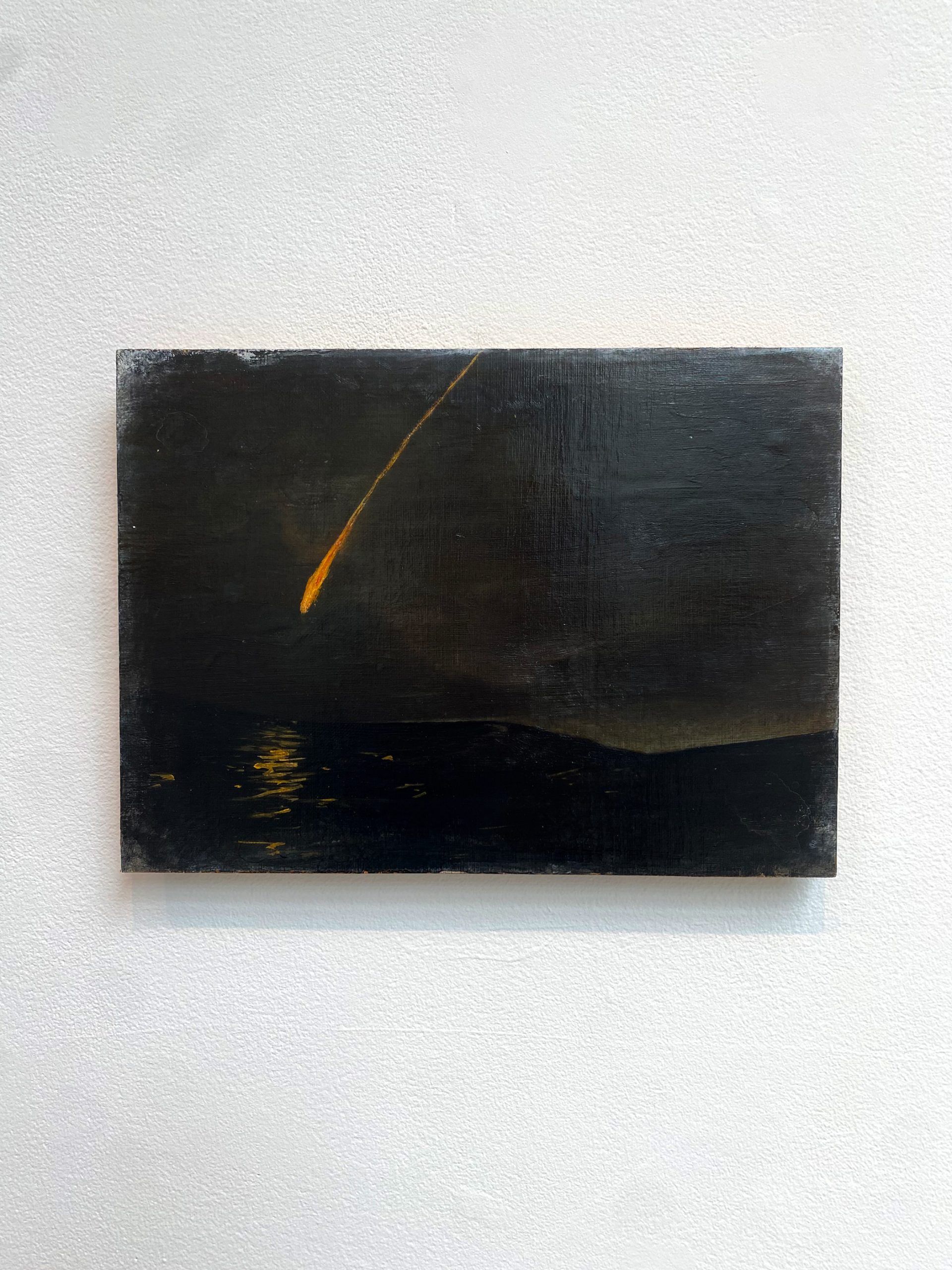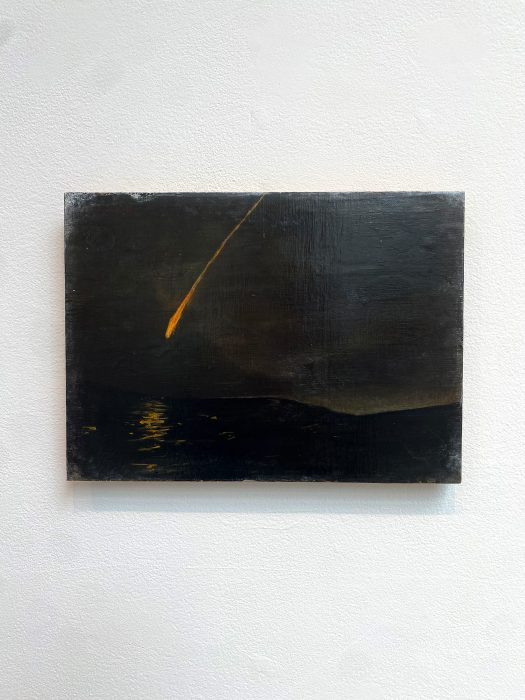April 16, 2024

Transcript by Gallery and Curatorial Fellow Kaitlin Benton

Transcript
In Starshining Sea, Haines utilizes a minimal color palette of black and gray hues to craft an ominous seascape, immersing the viewer into the depths of uncertainty. Against a backdrop of smokey gray clouds, a searing comet streaks through the sky, its trajectory seemingly destined to plummet into the distance.
The dark hues obscures the viewer’s vision and sense of place, effectively evoking an anxiety about their surroundings and what is at stake. The ripples on the left hand surface of the canvas are illuminated by the flaming comet, suggesting the presence of a body of water. However, the angular form of the horizon line implies the shape of a distant landscape, adding a layer of ambiguity to the scene.
Comets, seen as purveyors of destruction, frequently grace the skies of Eben Haines’ work. From ancient Chinese pictorials to Babylonian cuneiform and rock carvings on Aztec buildings, as well as ancient Egyptian art, the existence of these celestial entities have captured the attention of cultures across the globe for millennia. Ancient civilizations of the past relied on the slow moving cycles of the sun, moon, and stars to organize time and predict good harvests. Comets, however, appeared spontaneously and chaotically. Before scientific explanations in the 16th century, comets as symbols in mythology and folklore were often seen as ethereal weapons, bad omens from the gods, impending failure, and chaos. After comet sightings, observers braced themselves for disasters such as earthquakes, famine, epidemics, and war. While scientific observation provides more predictability to us as observers, symbols of comets continue to accompany storytelling and artwork today.
Haines juxtaposes interpretations of optimism and destruction as comets can also take on the appearance of shooting stars, contrastingly seen as signs of hope, As Haines places the viewer in a space of uncertainty with the outcome yet determined, it is up to the viewer to interpret this blazing trail as a catalyst for extinction or an opportunity for a new beginning. The destination of the comet is unknown, it could crash into the earth or nearly miss us. With the climate crisis surrounding sea levels, temperature increases, and future unpredictability of our environment, Haines’ work admonishes us from waiting to find out. Instead, he advocates that action must be taken now to preserve the quality of our future. As we move beyond the gallery, how can we raise awareness and share information in our communities to amplify these pressing issues?